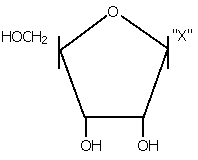NEET Biology, Class 11 MCQs | Biomolecules NEET Questions | Biomolecules MCQ | Biomolecules class 11 Question Bank | Biomolecules NEET MCQ | Biomolecules Biology NEET MCQ
Biomolecules: MCQs Quiz - 02
Question 1 |

| Category | Component | |
| (1) | Nucleotide | Adenine |
| (2) | Nucleoside | Uracil |
| (3) | Cholesterol | Guanin |
| (4) | Amino acid | NH2 |
Option (1) | |
Option (2) | |
Option (3) | |
Option (4) |
Question 2 |
Phosphorus is a constituent of cell membranes, certain nucleic acids and all proteins | |
Nitrosomonas and Nitrobacter are chemoautotrophs | |
Anabaena and Nostoc are capable of fixing nitrogen in free-living state also | |
Root nodule forming nitrogen fixers live as aerobes under free-living conditions |
Question 3 |
Collagen | |
Insulin | |
Trypsin | |
Haemoglobin |
Question 4 |
Molecular size of the enzyme | |
The pH optimum value | |
The Km value | |
Formation of the product |
Question 5 |
Glutamic acid | |
Aspartic acid | |
Glycine | |
Alanine |
Question 6 |
Inulin | |
Suberin | |
Lignin | |
Starch |
Question 7 |
Competitive inhibition is seen when a substrate competes with an enzyme for binding to an inhibitor protein | |
Non-competitive inhibitors often bind to the enzyme irreversibly | |
Competitive inhibition is seen when the substrate and the inhibitor compete for the active site on the enzyme | |
Non-competitive inhibition of an enzyme can be overcome by adding large amount of substrate |
Question 8 |
Are exclusively synthesized in the body of a living organism as at present | |
enhance oxidative metabolism | |
Are conjugated proteins | |
Help in regulating metabolism |
Question 9 |
Fungi, algae and green plants cells | |
All bacteria, fungi and algae | |
Some bacteria, algae and green plant cells | |
Viruses, fungi and bacteria |
Question 10 |

The rate of enzyme reaction is directly proportional to the substrate concentration | |
Presence of an enzyme inhibitor in the reaction mixture | |
Formation of an enzyme-substrate complex | |
At higher substrate concentration the pH increases |
Question 11 |

a-normal enzyme reaction, b-competitive inhibition, c-non-competitive inhibition | |
a-enzyme with an allosteric modulator added, b-normal enzyme activity, c-competitive inhibition | |
a-enzyme with an allosteric stimulator, b-competitive inhibitor added, c-normal enzyme reaction | |
a-normal enzyme reaction, b-non-competitive inhibitor added, c-allosteric inhibitor added |
Question 12 |
Lysine, glycine, thiamine — Amino acids | |
Myosin, oxytocin and gastric — Hormones | |
Rennin, helicase and hyaluronidase — Enzymes | |
Optic nerve, oculomotor, vagus — Sensory nerves |
Question 13 |
Assertion: Arachidic acid is an unsaturated fatty acid.
Reason: There are one or more double bonds between carbon atoms in unsaturated fatty acids.
Both Assertion and Reason are true and Reason is the correct explanation of the Assertion. | |
Both Assertion and Reason are true but the Reason is not the correct explanations of Assertion. | |
Assertion is true, but Reason is false. | |
Both Assertion and Reason are false. |
Question 14 |
Assertion: A coenzymes or metal ions that is very tightly bound to enzyme protein is called prosthetic group.
Reason: A complete, catalytically active enzyme together with its bound prosthetic group is called apoenzyme.
Both Assertion and Reason are true and Reason is the correct explanation of the Assertion. | |
Both Assertion and Reason are true but the Reason is not the correct explanations of Assertion. | |
Assertion is true, but Reason is false. | |
Both Assertion and Reason are false. |
Question 15 |
Given below are two statements A and B. Choose the correct answer related to the statements.
Statement A - Amino acids are amphoteric in their function.
Statement B - All amino acids are necessary for our body.
Statement A is wrong, statement B is correct | |
Both the statements A and B are wrong | |
Statement A is correct, statement B is wrong | |
Both the statements A and B are correct |



good awesome superb
These questions are informative…….
nice questions..
please bring more questions.
very nice good questions